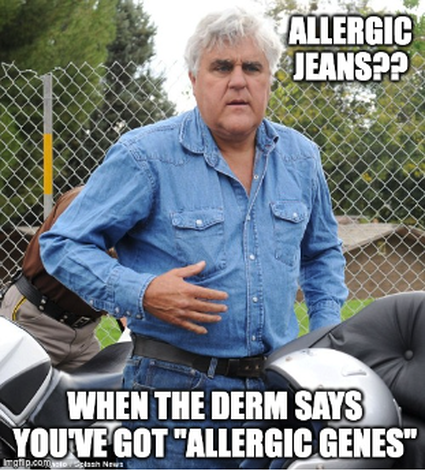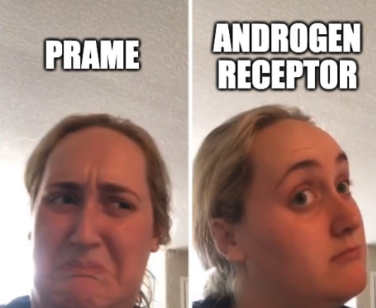Fifty-Nighth issue
May 1, 2024
More than skin deep: the rash consequences of stigma on pediatric patients
Children and adolescents with chronic skin disorders often experience a diminished quality of life (QOL) due to disruptions in physical, mental, and social health and potential stigmatization. Researchers sought to investigate the correlation between disease visibility, severity, mental health, and QOL in pediatric patients with chronic skin disorders. This cross-sectional, single-visit study was conducted at 32 pediatric dermatology centers and included 1671 patients/caregivers.
What did they find?
Main Takeaway: Stigma may greatly impact QOL and the mental health of pediatric patients with chronic skin diseases, highlighting that examining disease severity and visibility may be insufficient in fully evaluating disease impact.
Children and adolescents with chronic skin disorders often experience a diminished quality of life (QOL) due to disruptions in physical, mental, and social health and potential stigmatization. Researchers sought to investigate the correlation between disease visibility, severity, mental health, and QOL in pediatric patients with chronic skin disorders. This cross-sectional, single-visit study was conducted at 32 pediatric dermatology centers and included 1671 patients/caregivers.
What did they find?
- The mean age of participants was 13.7 (SD of 2.7), with 57.9% being female and 41.2% male.
- The most common diagnoses were acne (22.8%), atopic dermatitis (22.5%), alopecia (11.3%), and psoriasis (7.4%)
- 56.4% and 50.5% of participants self-reported their condition as highly visible and moderately severe, respectively
- 73% of participants experienced stigma, with increased stigma scores correlating with decreased QOL (ρ = 0.73), increased depression (p = 0.61), increased anxiety (ρ = 0.54), and poor peer relationships (ρ = -0.49)
- Bullying was reported by 29.4% of participants, directly correlating with high levels of stigma (d = -0.79)
Main Takeaway: Stigma may greatly impact QOL and the mental health of pediatric patients with chronic skin diseases, highlighting that examining disease severity and visibility may be insufficient in fully evaluating disease impact.
Gene profiling in active dermatitis lesions strengthens the diagnosis of allergic contact dermatitis
Journal of American Academy Dermatology
Journal of American Academy Dermatology
Are your "genes" to blame for your "jean" allergy?
Contact dermatitis (CD) is one of the most common inflammatory skin diseases, yet differentiating between allergic (ACD) and irritant (ICD) forms of CD remains challenging. Recently, analysis of transcriptomic signatures from positive CD patch test lesions led to the identification of a small panel of genes that could accurately discriminate between ACD and ICD reactions.
With only ~20% of patients referred for patch testing suffering from a true skin allergy, researchers sought to investigate if gene profiling in active CD lesions could aid in better selecting patients to refer for patch testing.
What did they find?
Main takeaway: While patch testing remains the gold standard, gene profiling of active contact dermatitis lesions shows promise in differentiating allergic contact dermatitis from irritant contact dermatitis and could serve as a screening tool prior to patch testing.
Contact dermatitis (CD) is one of the most common inflammatory skin diseases, yet differentiating between allergic (ACD) and irritant (ICD) forms of CD remains challenging. Recently, analysis of transcriptomic signatures from positive CD patch test lesions led to the identification of a small panel of genes that could accurately discriminate between ACD and ICD reactions.
With only ~20% of patients referred for patch testing suffering from a true skin allergy, researchers sought to investigate if gene profiling in active CD lesions could aid in better selecting patients to refer for patch testing.
What did they find?
- Active and patch test lesion samples from confirmed ACD patients expressed a comparable level of biomarker induction
- 100% (17 out of 17) of patients with confirmed ACD by patch testing exhibited a strong level of biomarker induction in active contact dermatitis lesions
- No biomarker induction was detected in 71% (15 out of 21) of active lesions in patch test-negative patients
Main takeaway: While patch testing remains the gold standard, gene profiling of active contact dermatitis lesions shows promise in differentiating allergic contact dermatitis from irritant contact dermatitis and could serve as a screening tool prior to patch testing.
Androgen receptor immunohistochemistry is superior to PRAME for the differentiation of sebaceous carcinoma from primary cutaneous basaloid mimics
American Journal of Dermatopathology
American Journal of Dermatopathology
Does PRAME deserve the fame?
Sebaceous carcinoma (SC) is a rare cutaneous neoplasm that often presents with a poorly differentiated growth pattern on histology, leading to diagnostic uncertainty. Androgen receptor (AR) immunohistochemistry can aid in diagnosing SC but is nonspecific. Recent studies showed that preferentially expressed antigen in melanoma (PRAME) can be used in the cytoplasmic labeling of sebocytes. Researchers sought to compare the efficacy of PRAME to AR in SC diagnostics by examining the expression of AR and PRAME in SC (n = 9) and histologic mimics (n = 41).
What did they find?
Main Takeaways: AR may be a superior immunohistochemical marker in distinguishing SC from histologic mimics in comparison to PRAME.
Sebaceous carcinoma (SC) is a rare cutaneous neoplasm that often presents with a poorly differentiated growth pattern on histology, leading to diagnostic uncertainty. Androgen receptor (AR) immunohistochemistry can aid in diagnosing SC but is nonspecific. Recent studies showed that preferentially expressed antigen in melanoma (PRAME) can be used in the cytoplasmic labeling of sebocytes. Researchers sought to compare the efficacy of PRAME to AR in SC diagnostics by examining the expression of AR and PRAME in SC (n = 9) and histologic mimics (n = 41).
What did they find?
- 4 SC cases (44%) showed weak and focal cytoplasmic PRAME expression, while all histologic mimics (n = 41) were negative for cytoplasmic PRAME expression
- 8 SC cases (89%) showed diffuse AR expression, while only 12 histologic mimics (29%) showed weak-to-moderate and focal AR expression
- AR has higher sensitivity (66%) than PRAME (22%) and comparable specificity (92%) to PRAME (100%) for SC
Main Takeaways: AR may be a superior immunohistochemical marker in distinguishing SC from histologic mimics in comparison to PRAME.
Melt away melasma with metformin!
While trichloroacetic acid (TCA 25%) peeling agent is viewed by many as the best available treatment option for melasma, its often suboptimal treatment outcomes are indicative of the challenge that surrounds the treatment of this condition. Recently, topical metformin has been reported to treat hyperpigmentary cutaneous disorders; however, dermatologic effects of systemic metformin remain to be studied.
In this double-blinded, randomized control trial, patients with melasma (n = 69) were split into 3 treatment arms: 25% TCA + systemic metformin 1,000 mg/d (Group A), 25% TCA + systemic metformin 500 mg/d (Group B), and 25% TCA + placebo (Group C). Melasma Area and Severity Index (MASI) score, patient satisfaction, and Melasma impact Quality of Life Scale (MALASQOL) were assessed over 6 sessions, each two weeks apart.
What did they find?
Main Takeaway: The use of systemic metformin in combination with TCA may be an effective treatment option for melasma.
While trichloroacetic acid (TCA 25%) peeling agent is viewed by many as the best available treatment option for melasma, its often suboptimal treatment outcomes are indicative of the challenge that surrounds the treatment of this condition. Recently, topical metformin has been reported to treat hyperpigmentary cutaneous disorders; however, dermatologic effects of systemic metformin remain to be studied.
In this double-blinded, randomized control trial, patients with melasma (n = 69) were split into 3 treatment arms: 25% TCA + systemic metformin 1,000 mg/d (Group A), 25% TCA + systemic metformin 500 mg/d (Group B), and 25% TCA + placebo (Group C). Melasma Area and Severity Index (MASI) score, patient satisfaction, and Melasma impact Quality of Life Scale (MALASQOL) were assessed over 6 sessions, each two weeks apart.
What did they find?
- Mean percentage of MASI score in Group A showed significant improvement when compared to Group C (p = 0.045)
- MASI improved by 35%, 10%, and 5% in Groups A, B, and C, respectively
- Epidermal melasma showed significantly better results than mixed-type melasma in all patients, MASI (p = 0.029) and MALASQOL (p = 0.001)
- Patient satisfaction in Groups A, B, and C was 70%, 80%, and 50%, respectively, with a statistically significant difference noted between Groups B and C (p < 0.05)
- The most commonly report side effect, GI upset, was significantly higher in Group A (70%) compared to Group B (20%) (p = 0.001)
Main Takeaway: The use of systemic metformin in combination with TCA may be an effective treatment option for melasma.
Is topical sulfur 2% cream or triamcinolone 0.1% cream more effective in the treatment of chronic hand eczema?
Journal of Cosmetic Dermatology
Journal of Cosmetic Dermatology
Itching for a fight? Sulfur takes on triamcinolone to treat hand eczema!
Chronic hand eczema (CHE), characterized by hand eczema that lasts longer than 6 months, affects 10% of the general population. In this randomized, triple-blind clinical trial, researchers aimed to compare two common treatment options for CHE: triamcinolone 0.1% cream and sulfur 2% cream.
Patients with CHE (n = 70), who were treatment-free for one month, were randomized to use either triamcinolone 0.1% cream or sulfur 2.0% cream on their left or right hand twice daily for 4 weeks. The visual analog scale (VAS) and the hand eczema severity index (HECSI) were utilized at study initiation, immediately following treatment, and 4 weeks post-treatment.
What did they find?
Main takeaway: Sulfur 2% cream and triamcinolone 0.1% cream demonstrate similar efficacy in the treatment of chronic hand eczema.
Chronic hand eczema (CHE), characterized by hand eczema that lasts longer than 6 months, affects 10% of the general population. In this randomized, triple-blind clinical trial, researchers aimed to compare two common treatment options for CHE: triamcinolone 0.1% cream and sulfur 2% cream.
Patients with CHE (n = 70), who were treatment-free for one month, were randomized to use either triamcinolone 0.1% cream or sulfur 2.0% cream on their left or right hand twice daily for 4 weeks. The visual analog scale (VAS) and the hand eczema severity index (HECSI) were utilized at study initiation, immediately following treatment, and 4 weeks post-treatment.
What did they find?
- Both triamcinolone 0.1% and sulfur 2.0% cream significantly reduced HECSI and VAS scores, both directly following and 4 weeks post-treatment (p <0.001 for all reported statistics)
- Sulfur 2.0% cream was more effective at reducing HECSI and VAS scores than triamcinolone 0.1% after 4 weeks of therapy (p < 0.05)
- There was no significant difference between triamcinolone 0.1% and sulfur 2.0% cream effects at 4 weeks post-treatment
Main takeaway: Sulfur 2% cream and triamcinolone 0.1% cream demonstrate similar efficacy in the treatment of chronic hand eczema.
This literature review set out to examine sun-protection usage behaviors and tendencies in varying demographics, with the end goal of identifying the most effective strategies to increase the use of sun protective measures.
What did they find?
Main Takeaway: Sun-protective behaviors vary amongst demographic groups, with personalized counseling and education showing to be the most effective interventions in increasing sun protection use.
What did they find?
- Males preferred to use UV-protective clothing, whereas females preferred sunscreen and shade.
- Skin cancer survivors may not prioritize sun protection, and it cannot be assumed they will consistently apply sunscreen.
- Children are open to wearing sun protective measures if not time-consuming.
- Individualized guidance on sun protection is essential for achieving maximum compliance, with the most effective approach being personalized education.
Main Takeaway: Sun-protective behaviors vary amongst demographic groups, with personalized counseling and education showing to be the most effective interventions in increasing sun protection use.






